Algaecide is a chemical that controls and reduces algae growth in ponds and other aquatic environments.
Here at Panhandle Ponds, we want each and every one of our outdoor features to look spectacular and crystal clear. But it’s not always as simple as putting some algaecide in your pond and waiting.
Instead, we have to do a thorough clean-up and constantly clean your pond for a while to give it a beautiful and clear look.
Let’s dive deeper into algaecides for ponds and how do they work.
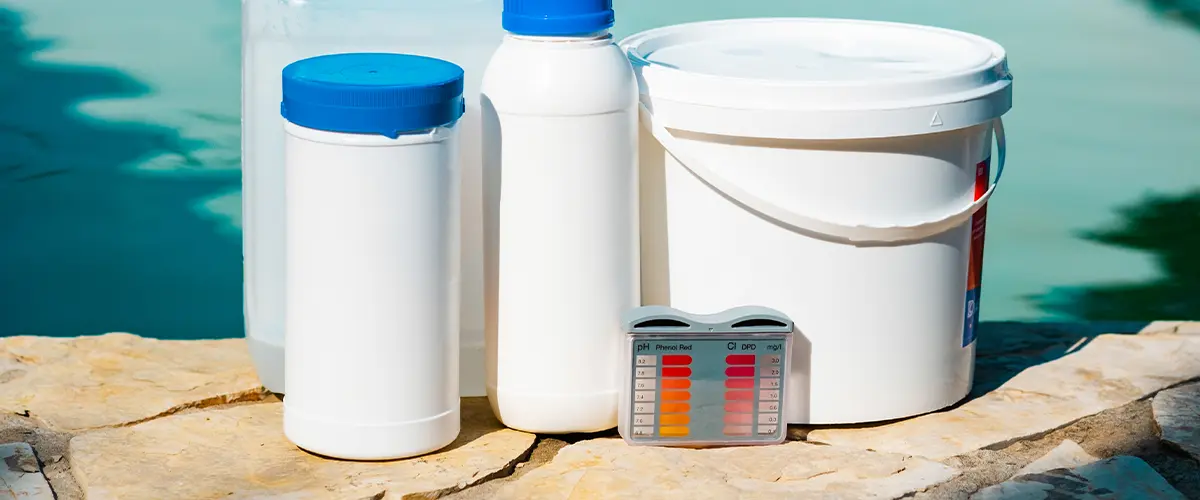
Algaecide 101
The active ingredient in algaecide disrupts certain algae’s reproductive cycle, stopping them from growing and spreading. Algaecide can also treat existing algae colonies, killing off the population and preventing further growth.
Algaecide is a safe, effective way to keep algae from becoming an unsightly or problematic nuisance in your pond.
How To Use Algaecide
When using Algaecide for ponds, it’s important to read and follow the instructions on the product label closely. This will ensure that you safely and effectively treat your pond for algae.
It’s also important to consider the type of algae you have and the size of your pond.
Depending on these factors, different products may be necessary, so research what is best for your particular situation before beginning treatment.
When applying algaecide, aim to disperse it in a pattern across the pond’s entire surface to ensure even coverage.
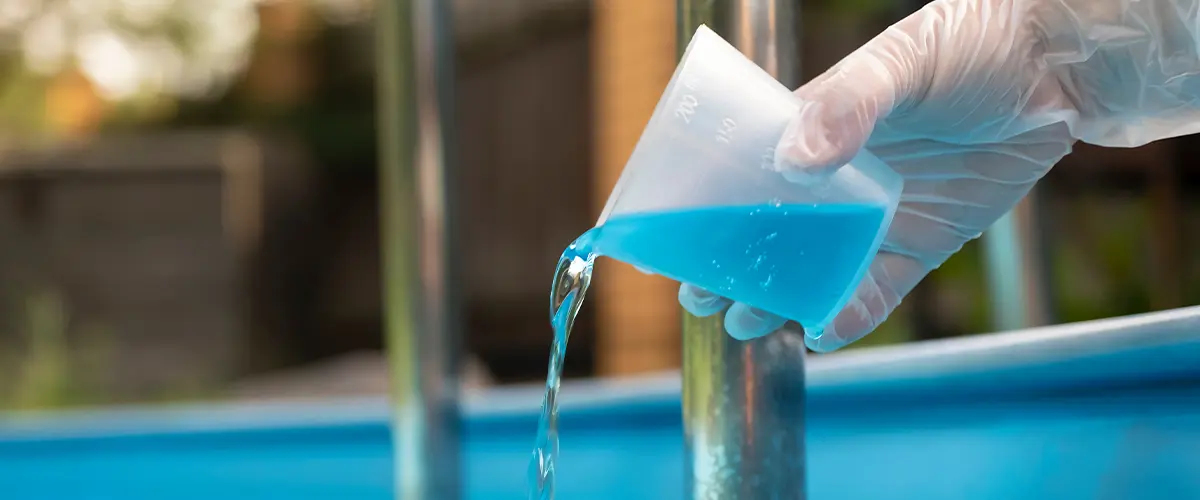
When To Avoid Using Algaecide
You should not use algaecide in ponds with fish or other aquatic organisms, especially during spawning periods. Algaecides are toxic to these organisms and can cause significant harm or death if used incorrectly.
Additionally, algaecides can potentially damage the natural balance of a pond’s ecosystem if used too often. As such, it is important to use Algaecide sparingly and in accordance with the product’s instructions.
The frequency at which you can use algaecide for ponds depends on many factors, such as the size of the pond, the type of algae present, and other aquatic species in the pond.
Generally speaking, algaecide can be used around once a month or every other month to prevent algae growth and maintain a healthy aquatic environment.
Alternatives To Algaecide
A few alternatives to algaecide can help keep a pond clean and clear of algae.
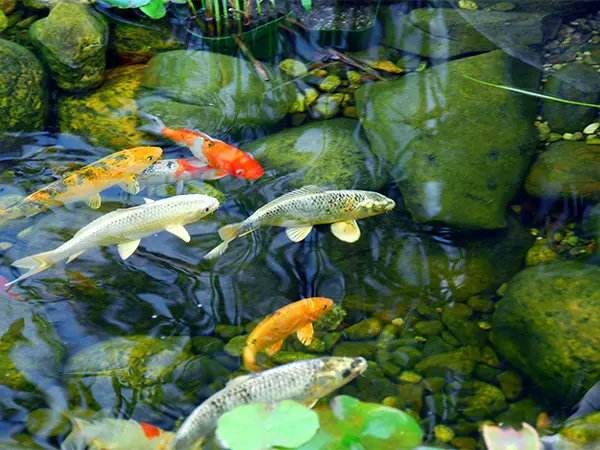
UV Lights
One of the most commonly used alternatives is ultraviolet light, which has been found to be effective in killing off algae growth. UV light works by breaking down the DNA of algae, preventing them from reproducing and thus eliminating them from the pond.
Vacuuming, Skimming, And Brushing
Vacuuming and skimming are two simple, effective ways to remove algae from a pond. Vacuuming involves using a submersible pump to suck out the algae and other debris from the bottom of the pond. Skimming is the process of removing floating debris, such as leaves and algae, with a skimmer net.
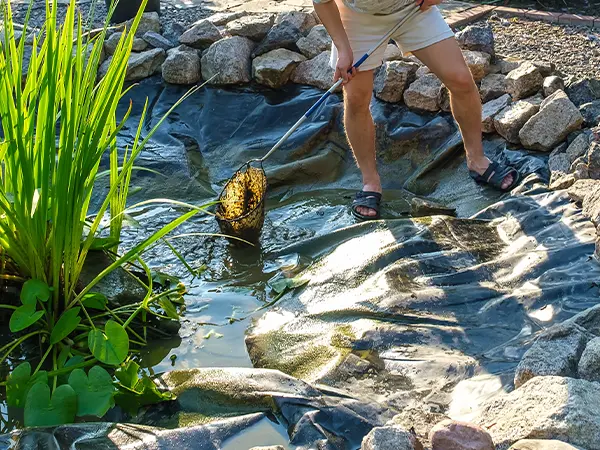
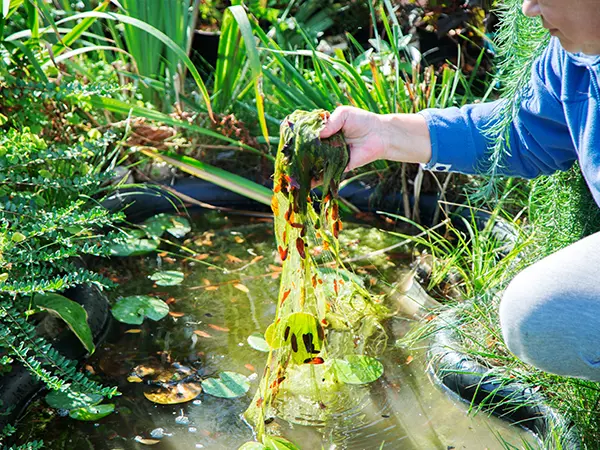
Deep Cleaning
Deep cleaning removes sludge, muck, and other organic matter from the bottom of a pond. It’s essential to pond maintenance, as these materials can smother plants, clog pumps, and reduce water quality.
Deep cleaning a pond involves draining the water low enough to allow access to the bottom and removing the sludge and muck. Deep cleaning can be difficult and time-consuming, so hiring a professional pond management company is best if you don’t feel comfortable doing it yourself.
Can You Use Algaecide By Yourself?
- First, if the algaecide is used incorrectly or in too high of a concentration, it can harm your pond's ecosystem and its inhabitants.
- Second, algaecides are designed for specific water types, temperatures, and pH levels, so you need to research what product is best for your particular situation.
Conclusion
Algaecide is an effective way to treat algae in ponds, but it’s important to use it correctly and sparingly to avoid harming the pond environment.
Alternatives such as UV lights, vacuuming and skimming, and deep cleaning can also help keep a pond clean and clear of algae. Ultimately, it’s best to consult a professional about the best course of action for your situation because algaecide is not always necessary.
Here at Panhandle Ponds, we’re always thorough with our work, but at the same time we want to use as little chemicals as possible to ensure your pond is 100% safe to sustain life.
Give us a call at (850) 723-0511 to learn more about your pond’s maintenance or request a free quote if you want a professional cleanup for your outdoor feature!
